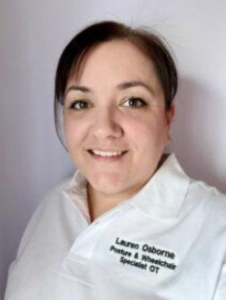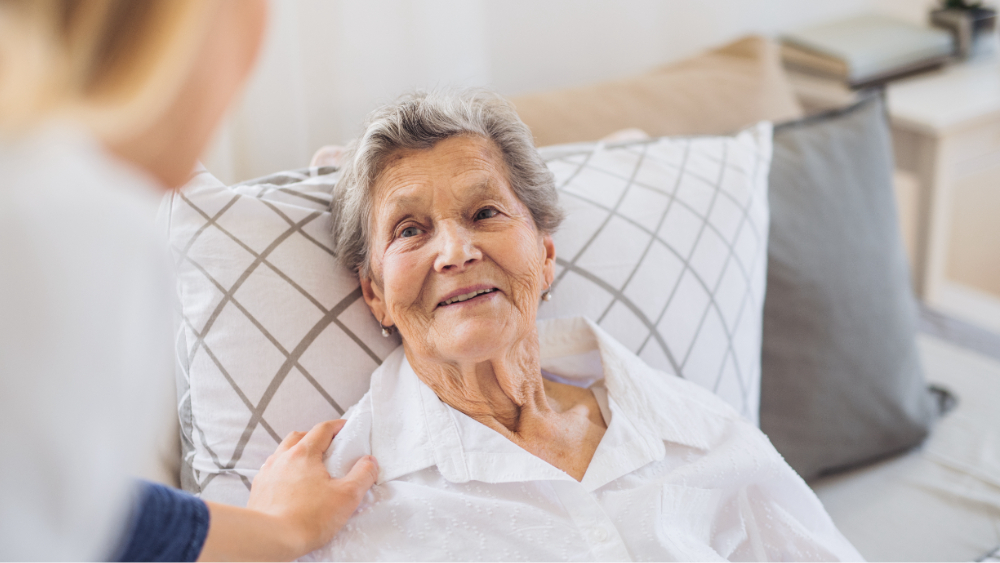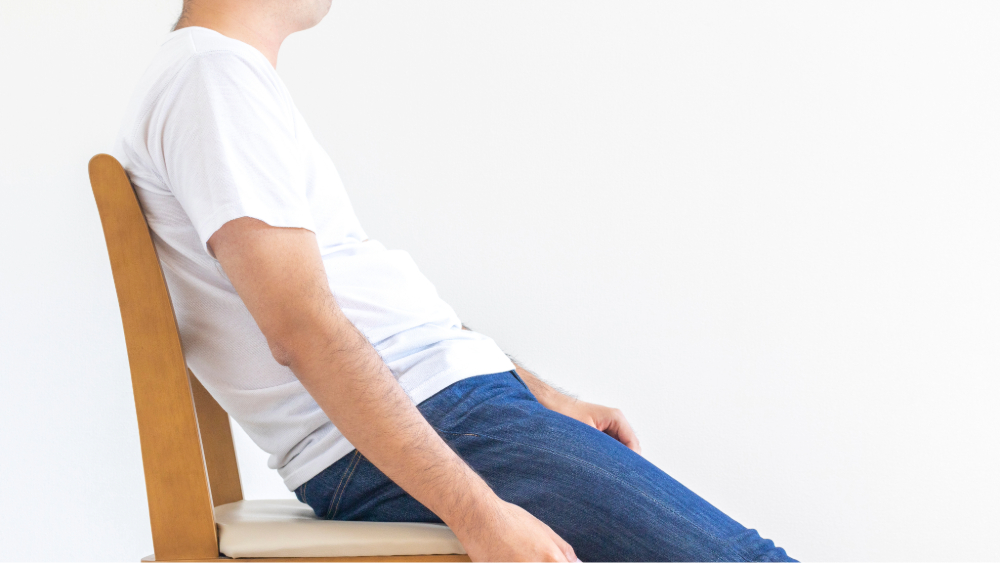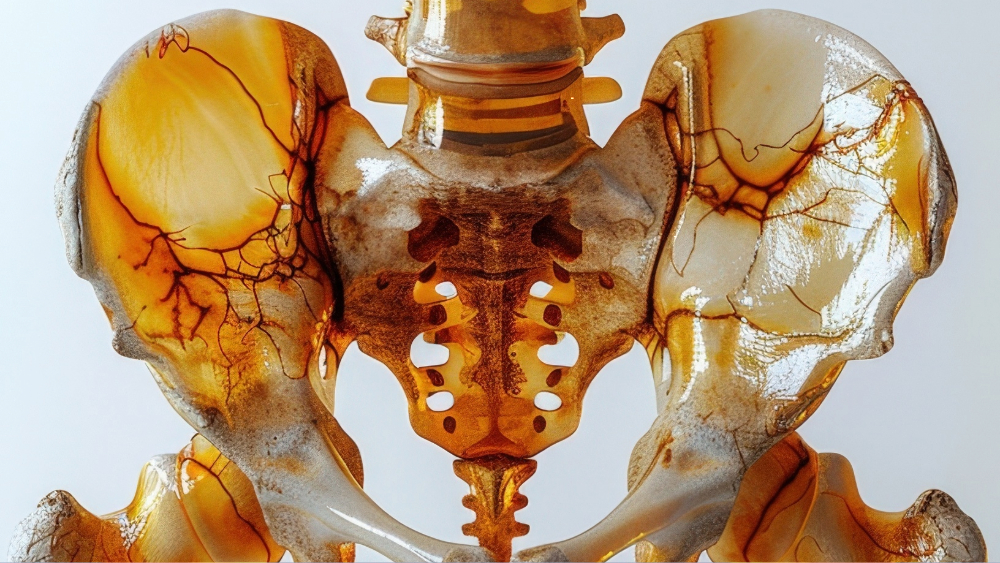Previously, we have considered how lying impacts sitting.
We are now going to consider how management of the lying posture can support functional sitting. Most people tend to lie on their side and when lying in bed unsupported, often people can develop contractures in their hip and knee joints as they naturally adopt a foetal position in lying. This can cause wind-sweeping of the lower limbs, shortening of the hamstrings and increase adduction of the knees, making sitting in alignment more difficult. When you add gravity into the equation, if the person remains in this position for prolonged periods and is unable to move their body into other positions, their muscle structure will adjust and these postures can become fixed deformities. Hips and knees remain tightly flexed, making it difficult to achieve a seated posture. The pelvis and spine can rotate, causing further complications for sitting posture.
Management of posture in a lying position is a crucial part of 24-hour postural care, owing to the length of time spent in bed[1][2][3][4][5][6] and the body being more receptive to specific positioning when muscle tone is more relaxed[7][8]. Therapeutic positioning plays an important role in a postural care programme and should be adopted alongside hands-on therapy to work on postural goals outside of seating that can improve range of movement and ultimately, function.
Night-time positioning has been reported as more effective when used as part of a 24-hour posture management programme[9][10] as positioning during the day can be influenced by the position adopted overnight[11]. Symmetrical supine lying is reported to be the optimum position to aid stretching of the muscles[12][13]. However, it should be noted that prolonged supine lying can also result in extension contractures at the hips, which can inhibit safe sitting, which is why a 24-hour approach that provides different positions and considers lying, sitting and standing is so crucial.
The benefits of posture management in a lying position reach further than just prevention of body shape distortion as it can also reduce pain, spasms, pressure risks, need for repositioning, improve sleep, respiratory function, circulation, digestion and comfort[14][15][16][17]. In addition, it is claimed that providing supports in lying can actually reverse body shape distortion by improving alignment and in some cases, reducing the need for corrective surgery[18][19].
However, lying supports are often the least used piece of posture management equipment[20] with difficulties using the equipment reported[21]. There is also a need for more robust evidence for its effectiveness[22][23][24][25][26][27] and guidance for clinicians in the provision of night-time positioning equipment in order to guide assessment and prescription decisions[28]. Further training is also required, not just for Therapists in providing supports but also families and carers who are the ones implementing the supports[29] to ensure they are used correctly and that families and carers feel empowered to support the person being cared for.
To learn more about the relationship between posture in lying and sitting, please watch the Careflex Webinar: 24-hour posture management with Simple Stuff Works.
Written by our guest blogger, Lauren Osborne, an Independent Posture & Wheelchair Specialist Occupational Therapist.

[1] Polak, F., Clift, M. and Clift, L. (2009) Buyers’ Guide. Night time postural management equipment for children CEP08030.: London: NHS Centre for Evidence-based Purchasing.
[2] Wynn, N. and Wickham, J. (2009) ‘Night-time positioning for children with postural needs: What is the evidence to inform best practice?’, The British journal of occupational therapy., 40(12), pp. 543.
[3] Hill, C. M., Parker, R. C., Allen, P., Paul, A. and Padoa, K. A. (2009) ‘Sleep quality and respiratory function in children with severe cerebral palsy using night-time postural equipment: a pilot study’, Acta Paediatrica, 98, pp. 1809-1814.
[4] Hill, S. and Goldsmith, J. (2010) ‘Biomechanics and prevention of body shape distortion’, Tizard Learning Disability Review, 15(2), pp. 15-32.
[5] Clayton, S. (2013) Living Local Postural Care Project Evaluation. Postural Care CIC.
[6] Innocente, R. (2014) ‘Night-time positioning equipment: A review of practices’, NEW ZEALAND JOURNAL OF OCCUPATIONAL THERAPY, 61(1), pp. 13-20.
[7] Polak, F., Clift, M. and Clift, L. (2009) Buyers’ Guide. Night time postural management equipment for children CEP08030.: London: NHS Centre for Evidence-based Purchasing.
[8] Stephens, M. Bartley, C. and Priestley, C. (2018) Night-time Positioning for Care Home Residents. [Online] URL: https://www.semanticscholar.org/paper/Evaluation-of-night-time-therapeutic-positioning-Stephens-Bartley/fae9f3c7670c8226384c266aa5562f0e24249d49?p2df (Accessed 24.06.24).
[9] Wynn, N. and Wickham, J. (2009) ‘Night-time positioning for children with postural needs: What is the evidence to inform best practice?’, The British journal of occupational therapy., 40(12), pp. 543.
[10] Hill, C. M., Parker, R. C., Allen, P., Paul, A. and Padoa, K. A. (2009) ‘Sleep quality and respiratory function in children with severe cerebral palsy using night-time postural equipment: a pilot study’, Acta Paediatrica, 98, pp. 1809-1814.
[11] Polak, F., Clift, M. and Clift, L. (2009) Buyers’ Guide. Night time postural management equipment for children CEP08030.: London: NHS Centre for Evidence-based Purchasing.
[12] Polak, F., Clift, M. and Clift, L. (2009) Buyers’ Guide. Night time postural management equipment for children CEP08030.: London: NHS Centre for Evidence-based Purchasing.
[13] Hill, S. and Goldsmith, J. (2010) ‘Biomechanics and prevention of body shape distortion’, Tizard Learning Disability Review, 15(2), pp. 15-32.
[14] Hill, C. M., Parker, R. C., Allen, P., Paul, A. and Padoa, K. A. (2009) ‘Sleep quality and respiratory function in children with severe cerebral palsy using night-time postural equipment: a pilot study’, Acta Paediatrica, 98, pp. 1809-1814.
[15] Hill, S. and Goldsmith, J. (2010) ‘Biomechanics and prevention of body shape distortion’, Tizard Learning Disability Review, 15(2), pp. 15-32
[16] Innocente, R. (2014) ‘Night-time positioning equipment: A review of practices’, NEW ZEALAND JOURNAL OF OCCUPATIONAL THERAPY, 61(1), pp. 13-20.
[17] Owens, K. and Daly, G. (2017) A Study into the effectiveness of 24 Hour Postural Care in the Management of Contractures in Care Homes. Middlesborough Council.
[18] Hill, S. and Goldsmith, J. (2010) ‘Biomechanics and prevention of body shape distortion’, Tizard Learning Disability Review, 15(2), pp. 15-32
[19] Robertson, J., Baines, S., Emerson, E. and Hatton, C. (2018) ‘Postural care for people with intellectual disabilities and severely impaired motor function: A scoping review’, JOURNAL OF APPLIED RESEARCH IN INTELLECTUAL DISABILITIES, 31(SUPP/1), pp. 11-28.
[20] Pountney, T. E., Mandy, A., Green, E. and Gard, P. R. (2009) ‘Hip subluxation and dislocation in cerebral palsy – a prospective study on the effectiveness of postural management programmes’, Physiotherapy research international: the journal for researchers and clinicians in physical therapy, 14(2), pp. 116-27.
[21] Wynn, N. and Wickham, J. (2009) ‘Night-time positioning for children with postural needs: What is the evidence to inform best practice?’, The British journal of occupational therapy., 40(12), pp. 543.
[22] Wynn, N. and Wickham, J. (2009) ‘Night-time positioning for children with postural needs: What is the evidence to inform best practice?’, The British journal of occupational therapy., 40(12), pp. 543.
[23] Gough, M. (2009) ‘Continuous postural management and the prevention of deformity in children with cerebral palsy: an appraisal’, Developmental medicine and child neurology, 51(2), pp. 105-10.
[24] Blake, S. F., Logan, S., Humphreys, G., Matthews, J., Rogers, M., Thompson-Coon, J., Wyatt, K. and Morris, C. (2015) ‘Sleep positioning systems for children with cerebral palsy’, The Cochrane database of systematic reviews, (11), pp. CD009257.
[25] Robertson, J., Baines, S., Emerson, E. and Hatton, C. (2018) ‘Postural care for people with intellectual disabilities and severely impaired motor function: A scoping review’, JOURNAL OF APPLIED RESEARCH IN INTELLECTUAL DISABILITIES, 31(SUPP/1), pp. 11-28.
[26] Stephens, M. Bartley, C. and Priestley, C. (2018) Night-time Positioning for Care Home Residents. [Online] URL: https://www.semanticscholar.org/paper/Evaluation-of-night-time-therapeutic-positioning-Stephens-Bartley/fae9f3c7670c8226384c266aa5562f0e24249d49?p2df (Accessed 24.06.24).
[27] Humphreys, G., King, T., Jex, J., Rogers, M., Blake, S., Thompson-Coon, J. and Morris, C. (2019) ‘Sleep positioning systems for children and adults with a neurodisability: A systematic review’, British Journal of Occupational Therapy, 82(1), pp. 5-14.
[28] Blake, S. F., Logan, S., Humphreys, G., Matthews, J., Rogers, M., Thompson-Coon, J., Wyatt, K. and Morris, C. (2015) ‘Sleep positioning systems for children with cerebral palsy’, The Cochrane database of systematic reviews, (11), pp. CD009257.
[29] Osborne, L.J., Gowran, R.J. and Casey, J. (2023) ‘Evidence for 24-hour posture management: A scoping review’, The British journal of occupational therapy, 86(3), pp. 176–187.



